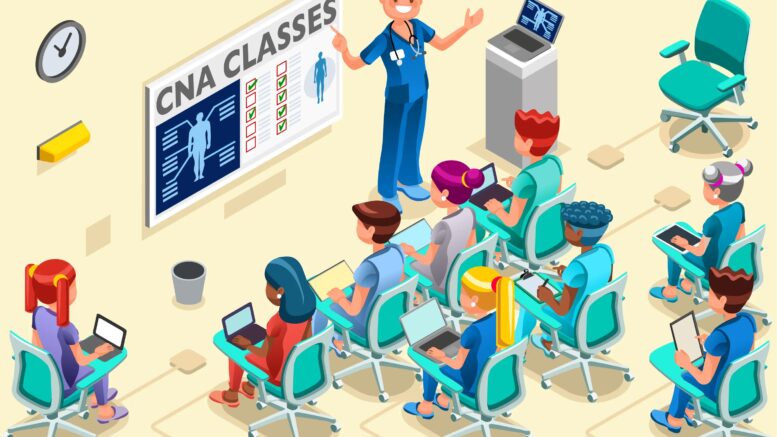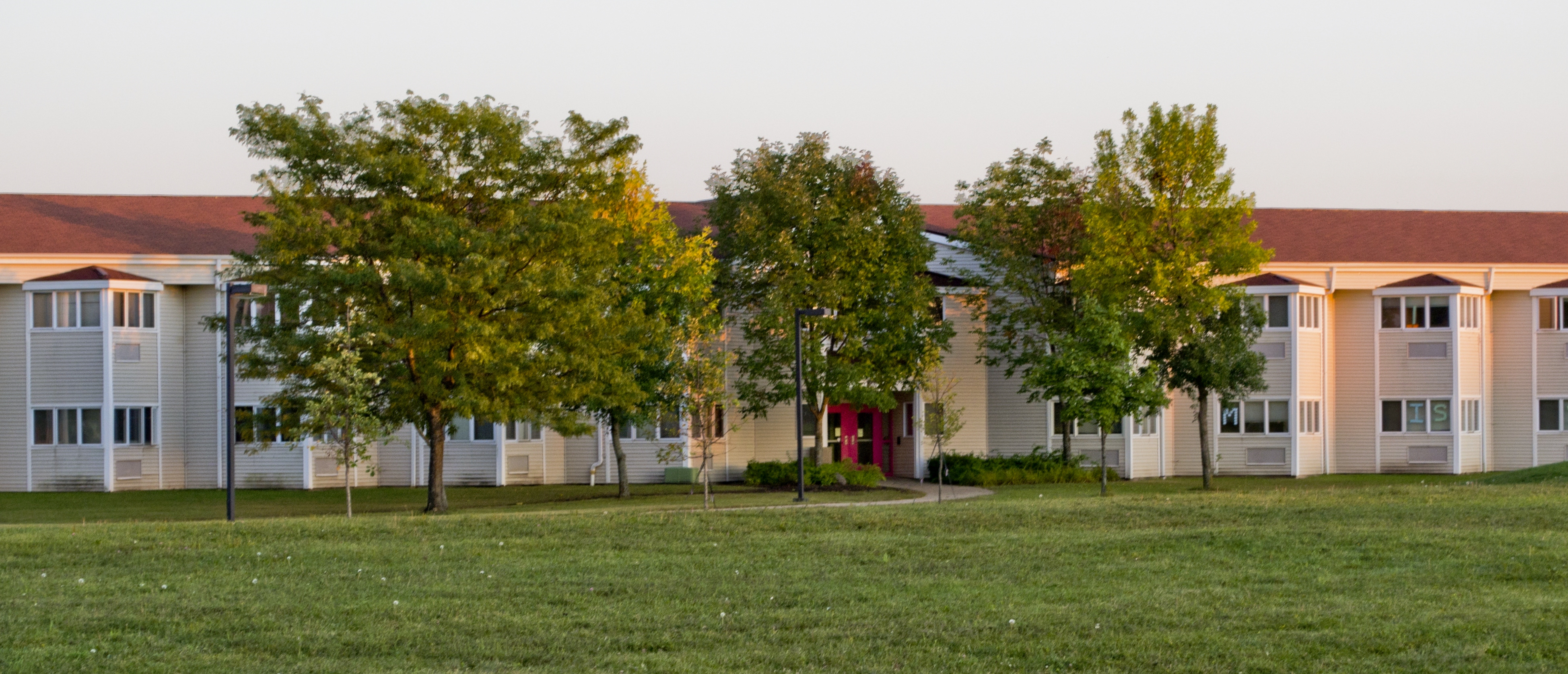2024 began with IMSA students participating in a first-ever 2-week intersession. Some students were traveling, some were virtual, and some were on campus. These classes allowed students in every grade to explore passions outside of regular courses. Some were quarter-time, others were part-time, and a few were even full-time. One of these full-time opportunities was Nurse Angie Shoener’s new Certified Nursing Assistant (CNA) intersession. Let’s look at the details:
What does the CNA Program look like at IMSA?
The CNA program was taught in the form of a full-time intersession by IMSA’s Coordinator of Student Health Services, Nurse Angie. The curriculum was determined by the state of Illinois. In an interview with Nurse Angie, she took me to E107 across from the auditorium where the two-week intersession took place.
There were two sections of the room: the lab and the classroom. Nurse Angie detailed that to complete the program, the participants had to complete 80 hours in the program. 80% of this was theory and the remaining 20% took place in the lab. If you can do the math, that means students spent a total of 8 hours a day, 5 days a week for 2 weeks in the intersession. While in the lab, participants had the opportunity to demonstrate their knowledge and check off 21 different skills:
- Wash hands
- Oral hygiene
- Shave a resident
- Perform nail care
- Perform perineal care
- Give partial bath
- Give a shower or tub bath
- Make occupied bed
- Dress a resident
- Transfer resident to wheelchair using a transfer belt
- Transfer using a mechanical lift
- Ambulate with a transfer belt
- Feed a resident
- Calculate intake and output
- Place resident in a side-lying position
- Passive range of motion
- Apply and remove personal protective equipment
- Measure and record temperature, pulse, and respiration
- Measure and record blood pressure
- Measure and record weight
- Measure and record height
For each skill, steps were recorded as “pass” or “fail.”
However, on top of those 80 hours in lab and theory, there were an additional 40 hours necessary in Asbury Gardens Senior Living in North Aurora. After completing these steps, participants could get tested and become certified nursing assistants.
Nurse Angie described that it wasn’t all just taking notes and watching videos. Students had a lot of fun, as well. They performed entertaining activities and simulations that helped add to the curriculum. For instance, on one of the days, participants put on blindfolds and earplugs to simulate being blind and deaf. Their peers had to communicate and guide them throughout the school while avoiding doorways and walls. Additionally, one of the activities was to feed each other mechanical soft diets of rice, chickpeas, pudding, and Jell-O.
How did the program come to be?
In the interview with Nurse Angie, she described that in the spring of 2023 Dr. Evan M. Glazer, President and CEO of IMSA, called for innovative ideas that would benefit students.
As the medical field is a passion of many IMSA students and being a CNA is an amazing entry-level position for a variety of nursing careers, Nurse Angie developed this intersession. Travel grants allowed her to travel to Hawaii and visit 3 different schools now represented in the Health Office at IMSA. In the state of Hawaii, high school students need 2 years of Career and Technical Education (CTE) to earn a high school diploma. With the inspiration from that trip, she created the CNA intersession.
Who was a part of it?
Nurse Angie explained that this opportunity was open to any IMSA student, regardless of grade and gender. To apply, students had to fill out an application, get a teacher recommendation, and be at least 16 years old. A handful of students applied, but there was only room for ten, though she says that even ten students were perhaps too much for one class.
What does the future look like?
Although nothing is concrete, Nurse Angie hopes to expand the program at IMSA to be year-round and on I-days. This would allow for more students to participate and get the opportunity to follow their passions. She hopes the program will continue with a few changes, most predominately being a smaller class size of about six. The pilot class of ten faced the challenge of not being able to do an activity while each person was getting checked off on one of the skills in the lab. Outside of the program itself, Nurse Angie hopes to open CPR training to students, as it is an important tool in a variety of situations.
The Certified Nursing Assistant intersession at IMSA was a huge success, and we hope to see similar opportunities available in the future.






Be the first to comment on "The Certified Nursing Assistant Intersession at IMSA and it’s Future"